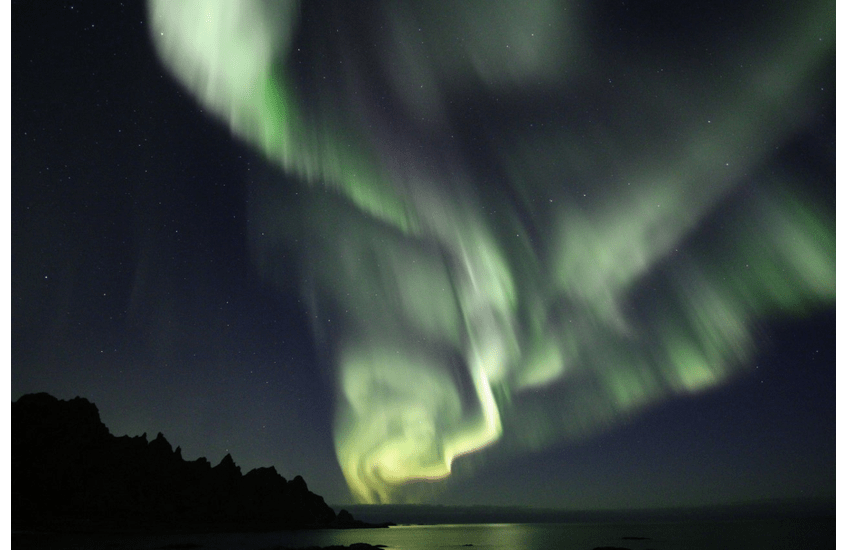Photo: Kjartan Olafsson
An auroral substorm may be characterized as a sudden, localized brightening of the aurora, that subsequently expands and breaks into many different forms, lighting up a dark sky.
It is well known that the substorm activity increases during times when the Interplanetary Magnetic Field (IMF) arriving at the Earth is pointing southward (as viewed from an observer sitting on the northern pole looking towards the Sun). The substorm occurrence rate is also affected by the dawn-dusk component (By) of the IMF, and until recently one has considered this contribution to be independent of the sign of By.
In a new paper by Anders Ohma et al. [2021], they use five different substorm lists to show that substorms are more frequent when the dipole tilt angle and the IMF By component have opposite signs. This means that when Earth is tilted towards the Sun (summer at the Northern Hemisphere, winter at the Southern Hemisphere), a dawnward-pointing magnetic field gives more frequent auroral breakups. And similarly, when Earth is tilted away from the Sun, a duskward-pointing magnetic field yields more auroral breakups.
«The paper demonstrates that the frequency of magnetospheric substorms is explicitly dependent on the sign of IMF By near the solstices» lead author Anders Ohma explains. «The result is based on five different onset lists based on independent substorm signatures, where the underlying data is obtained in both hemispheres or in the magnetosphere, making us certain that the observed signature represents a global difference in the magnetospheric response».
Ohma also notes that it has been claimed that substorms are overall more frequent for positive IMF and says: «We demonstrate that this is not the case, and further show how this apparent phenomena is caused by magnetosphere-ionosphere (M-I) coupling».
Until recently, explicit IMF By effects have been presumed to be caused by M-I coupling, and hence a phenomena that is only observed in the ionosphere and opposite in the northern and southern hemisphere. The first direct evidence of a global and magnetospheric dependence on the sign of IMF By was reported by Reistad et al. [2020], showing a difference in the polar cap size between positive and negative MF By in both hemispheres near summer and winter solstice. The new paper by Ohma et al. [2021] confirms the global nature of this effect, as the frequency of magnetospheric substorms also depent explicitly on the sign of the IMF By component for large dipole tilt angles.
About their next research steps, Anders Ohma says: «It is still unknown whether the difference seen for positive and negative IMF By is caused by differences in the dayside reconnection rate or in the magnetotail response. Further studies are needed to resolve the cause of this effect».




